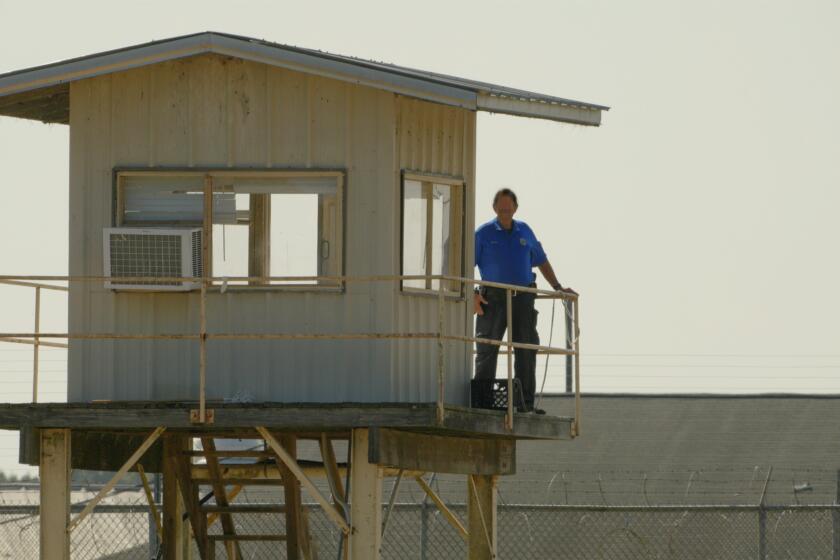Blake Edwards Is Up to His Movie Maverick Tricks Again
- Share via
Hollywood as the capital city of film was founded by mavericks--prospectors with hand-cranked cameras instead of mules and gold pans. And although it now dresses up like an industry, with stockholders and boards of directors, Hollywood still relies on mavericks to keep things lively and to slow the hardening of its arteries.
Reversing the usual trend, Blake Edwards, who began as an actor and then revealed gifts as a writer of often outrageous comedy, has become ever more the maverick as he has matured.
His “S.O.B.” a few years ago was a farcical satire on Hollywood itself, full of characters that seemed at best thinly disguised to protect the guilty. “Victor/Victoria” joked sympathetically about the gay life.
To make “That’s Life,” a sharp-edged comedy on mid-life crisis, Edwards, wife Julie Andrews and co-star Jack Lemmon deferred most of their salaries in favor of profit participation so the film (shot mainly at the Edwards-Andrews house) could be made for less than $2 million.
“That way, if it goes, everyone prospers,” Edwards said, “and if it doesn’t, nobody gets hurt too badly. And you don’t have to play safe with the material.”
Now, on a hot July day, Edwards is shooting at a home in Brentwood, doing a scene inspired by an anecdote from the life of Sir Ralph Richardson. The film is “Skin Deep,” a romantic comedy starring John Ritter. In the scene, he is attempting to discover his ex-wife’s address from his supremely hostile mother-in-law, played by Nina Foch.
Alyson Reed, a young dancer who did a dream sequence in “10,” which ended up on the cutting room floor, and who later won a Tony nomination for the revival of “Cabaret,” plays the ex-wife.
The film, budgeted at less than $10 million, is being made independently, financed by Joe Roth’s Morgan Creek Productions, which will negotiate a distribution deal with one of the studios on the basis of the early footage.
It is not quite the family project “That’s Life” was, but Edwards is again deferring much of his salary to keep the initial risk relatively small ($10 million is about half the average cost of a film at a major studio these days).
“It takes the pressure off,” Edwards says. “It’s bad enough dealing with one studio executive, let alone a committee. This way, as long as I’m on budget nobody much cares how long I shoot.”
“Skin Deep” is using locations almost entirely.
“Generally speaking, it’s cheaper,” Edwards says. “There are drawbacks. You can’t always pull out a wall and it’s not always easy to light.” But Edwards, who likes to improvise around the basic script he has written, finds that locations lend themselves to improvisation.
He has a hunch that actors may not like locations as well. There are fewer creature comforts and practical sets get very hot since the air conditioning, if any, is usually too noisy to run.
But actors, although they can take suffering or leave it alone, report they like the camaraderie and the family feeling engendered on locations.
Nina Foch, who in addition to acting now teaches student directors at USC how to work with actors and who also does private coaching, says: “Blake called me up and said, ‘How’d you like to save my butt?’ and then his cellular phone went dead. Very exciting.” Connections were re-established, and she’s having a fine time giving Ritter a hard time.
Edwards says he is writing a sequel to “S.O.B.,” in which two angels visit Earth with orders from God to destroy Hollywood unless they can find two honest men and women. Meanwhile, the Devil is doing his own recruiting.
“And where better than in Hollywood?” Edwards asks, smiling innocently.
“Sometimes,” he says, “it’s almost as if someone else has been writing it.”
Actually, Edwards sees evidence of a new generation of Hollywood executives emerging who have the same passion about the movies that the founding moguls had.
“I can’t help but admire them, even when I disagree with them,” Edwards says. “Jeff Katzenberg at Disney is passionate about film; that’s obvious.
“I respect anyone who knows how to make movies and cares about the business aspects as well. For a while the problem was that the studio leaders didn’t love the business. The old guys did heavy bad things but they lived for the business. They were the business.”
In the past, Edwards says, he has tried giving the audience what someone imagines it wants, and it usually doesn’t work.
“You put the ingredients together, but it’s not enough. You put ‘Rambo III’ together and suddenly the audience doesn’t want Rambo anymore. That’s the mistake executives always make--looking forward to the past.”
Making a movie is hard enough under the best of conditions, he says.
“I can’t sleep at night; I have to take a nap at lunchtime to make up the sleep. But you can have such a good time making a film, why sentence yourself to doing one you don’t love?”
More to Read
Only good movies
Get the Indie Focus newsletter, Mark Olsen's weekly guide to the world of cinema.
You may occasionally receive promotional content from the Los Angeles Times.










